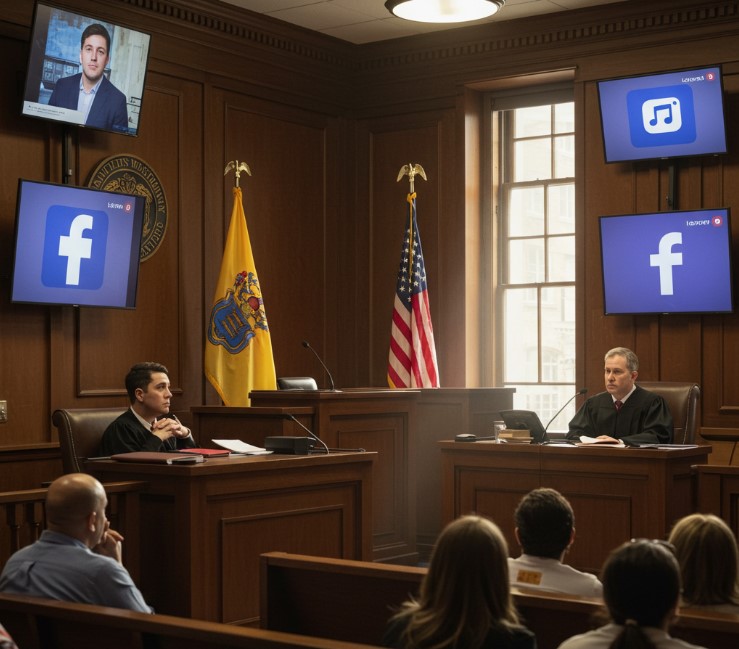Published as a Special Feature in the NJ Planner, July/August 2007
Zoning Boards of Adjustment are routinely asked to grant use variances for what are commonly referred to as, inherently beneficial uses.[1] As a legal term of art, inherently beneficial uses represent a class of uses that are so beneficial to society, that they are deemed to automatically satisfy the positive criteria. Some of the uses, which have been found by the Court’s to be inherently beneficial uses include, religious institutions, radio towers, schools and hospitals, to name a few.
There are some applicant’s attorneys that will tell you as a Board, that their application must be approved, merely because their client falls into the inherently beneficial use category. Obviously, this is an erroneous position.
All “d” variances, including inherently beneficial uses, require a super-majority of five (5) affirmative votes, thus signifying the degree of caution Boards should exercise when granting a “d” variance.[2]
As already stated, the edge inherently beneficial uses receive on review is that they are deemed to have satisfied the positive criteria. The Supreme Court of New Jersey in the case of Sica v. Township of Wall Zoning Board of Adjustment. 127 N.J. 152 (1992),[3] considered the standard of review to be applied to inherently beneficial uses and crafted what has become known as the Sica Balancing Test. The Court said that, the Board must consider the negative impact, if any, on surrounding property owners, even for inherently beneficial uses. The Board must then seek to mitigate these negative impacts by imposing reasonable conditions. However, when conditions cannot be imposed that would mitigate the negative impacts, a Board can deny an inherently beneficial use.
Every reasonable effort must be made to accommodate inherently beneficial uses. Sometimes, the negative impacts arising from an inherently beneficial use are so great that there are no reasonable conditions that can be imposed to lessen there impacts. Under such circumstances, the Board can and should deny even inherently beneficial uses. Denying an inherently beneficial use is serious business, and will most likely result in an appeal to the Superior Court. Your result will depend on the reasonableness of the Board’s decision making. In an appropriate case, Boards are allowed to retain independent experts to add balance to the proofs that have been considered. When an independent expert is retained, and you should consider that if you sense there will be substantial negative impacts, remember to couch your decision to retain that traffic or planning expert on your desire to have a complete picture, and not so much as a counter balance to the applicant’s testimony. Remember it is inappropriate to prejudge and case.
It is essential that you understand that inherently beneficial uses may not directly benefit your community, but that does not diminish their status. By way of example, a communication company needs to place a radio tower on a hill in your community to serve a community located in an adjacent valley. Saying something, “like we do not need that use in our community,” even when true, will result in your decision being reversed. Remember, society in general needs these uses.
As already mentioned, inherently beneficial uses can and should be denied when the negative impacts are great, and there is no reasonable condition, or group of conditions that can be imposed to offset the negative impacts arising from that use.
Religion
In addition to being an inherently beneficial use, religious institutions are protected by the Federal Government under a law known as, RLUIPA[4]. RLUIPA sets forth that if a local government agency unduly constrains the practice of their religion, they can be subject to counsel fees. Two (2) New Jersey Courts, both of which issued unpublished cases, have recently reviewed the effects of this law. The Appellate Division in the St. Joseph’s Korean Church case[5] and the Law Division in the Muslim Center of Somerville[6] have held that New Jersey’s inherently beneficial use doctrine satisfies the requirements of RLUIPA. Both Courts concluded religious institutions can be denied variance relief, when the negative impacts fail the Sica Balancing test.[7]
Here is a warning! A decision to deny any inherently beneficial use is a serious one, and should be carefully considered. But, if your Board turns down a religious institution and members make a statement, “like we do not need that religion in our town,” not only will this result in a reversal, but your town may be facing the repayment of the applicant’s counsel fees. So be careful!
Telecommunications Towers
Our Courts have found telecommunication towers to be inherently beneficial uses, as well. Again, as with religious institutions, Congress acted in this area of Land use when it passed the 1996 Telecommunications Act[8]. Notwithstanding this law, and the fact that telecommunication towers are inherently beneficial uses, they can be denied when the tower in question does not close a communication gap. This is why in every case there is testimony from a Radio Frequency Engineer to confirm that a gap exists. If you have doubts that a gap exists, the Board could retain its own independent Radio Frequency expert.
Once an applicant has convinced the Board that a gap exists, the negative impacts of the tower must be considered. Again, it is possible to impose conditions to mitigate the negative impacts of the use. Telecommunication companies are well acquainted with the Sica Balancing test, and they are fully prepared to camouflage towers. In urban areas, they routinely use faux brick at the top of the building, or on the side of the building, which makes the antennas virtually invisible to the naked eye. You should also be aware that Board’s are preempted from attempting to control the number of antennas on the tower, or to be concerned in any way with the impact of radiation.[9]
Responsible conduct
While inherently beneficial uses may be burdensome on a community, it must be kept in mind that they serve essential needs in our society. In order to circumvent Zoning Boards from denying legitimate inherently beneficial uses, various levels of government have pushed back with laws to protect them. RLUIPA and The Telecommunications Act of 1996 are examples on the Federal level. Similarly, the New Jersey legislature has taken away local control when an application involves a home day care[10], day care center[11] or group homes[12]. So, when you decide to oppose an inherently beneficial use, it must be because the impact on the neighborhood is harsh, every possible condition has been explored, and exhausted as ineffective.
Conclusion
Even inherently beneficial uses must satisfy the Board that the negative impacts of an applicant’s proposal do not exceed their special reasons. If they do the Board must seek to impose reasonable conditions, which will mitigate those negative impacts sufficiently to justify an approval. If after careful consideration of all potential conditions, it is concluded that the negative impacts outweigh the benefits then the application must be denied.
It must be expected that denying an inherently beneficial use will result in litigation. It is imperative that most, if not all Board Members, clearly put legitimate reasons on the record why they could not fashion reasonable conditions to justify the grant of the variance. It is critical that the Board not be parochial in its decision-making, no member should intimate that such a use is not appropriate for their community. The Board should consider hiring an expert to ensure that all possible facets of the case have been considered when they face a particularly troubling case.
Zoning Boards as guardians of the neighborhood’s quality of life should not shrink from a denial of even an inherently beneficial use, when good cause exists. But more importantly, armed with this knowledge you should recognize that you have great latitude in asking for reasonable changes to a proposal, even an inherently beneficial use, to ensure that it can be harmonized with its surroundings.
[1] Cox, New Jersey Zoning and Land Use Administration (Gann, 2005) Section 7.5 Pages 183-212.
[2] N.J.S.A. 40:55D-70(d)
[3] Sica v. Township of Wall Zoning Board of Adjustment. 127 N.J. 152 (1992).
[4] Religious Land Use and Institutionalized Persons Act 42 USC 2000cc.
[5] St. Joseph’s Korean Catholic Church v. Zoning Board of Adjustment of the Borough of Rockleigh. (unpublished opinion)
[6] Muslim Center of Somerset County, Inc., Mohammed Husain, Zahid, Chughtai v. Borough of Somerville Zoning Board of Adjustment, Borough of Somerville. (unpublished opinion)
[7] See also the published case of House of Fire Christian Church v. Zoning Board of Adjustment of the City of Clifton and the City of Clifton. 379 N.J. Super 526 (App. Div. 2005).
[8] 1996 Telecommunications Act. Pub. L. No. 104-104, 110. Stat. 56
[9] Cox, New Jersey Zoning and Land Use Administration (Gann, 2005) Section 21-2.2Pages 480-485
[10] N.J.S.A. 40:55D-66.5b
[11] N.J.S.A. 40:55D-66.6
[12] N.J.S.A. 40:55D-66(c)












